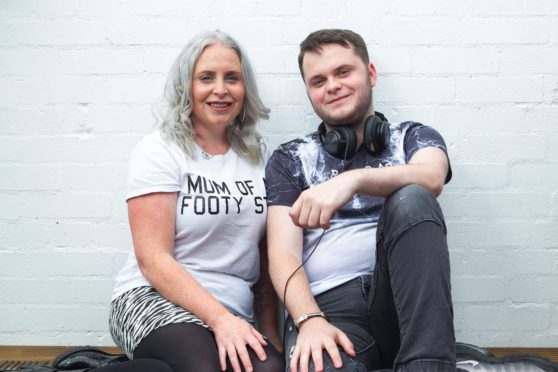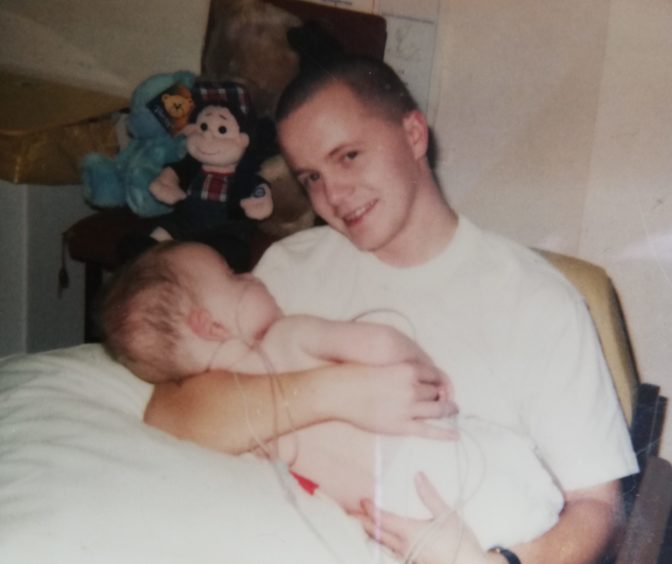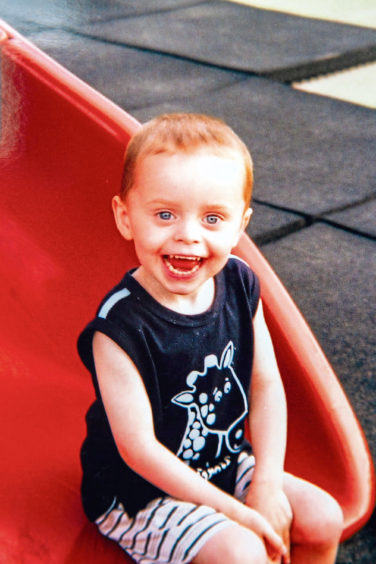
A teenager once described as the “sickest boy in the country” is aiming for a career in film after recovering.
Dylan Gaunt, 18, became so ill from a cold virus as a toddler that his heart suffered terrible damage and he “died” for 20 minutes at the Royal Hospital for Sick Children in Glasgow.
Doctors managed to resuscitate him and an emergency SOS was put out for a heart donor to keep him alive. Parents Kileen and Iain Gaunt, from East Kilbride, were shown around a children’s heart transplant unit to prepare them for the emotional rollercoaster of the operation.
But Dylan went on to make an amazing discovery and now, 16 years later, is hoping for a future as a sound engineer. He is thriving and takes no heart drugs at all as he goes into his second year of an HND in sound engineering at Glasgow’s Kelvin College.
“We still don’t know to this day how he survived,” said Kileen, 41. “Dylan was just 20 months old when he became desperately ill from what seemed at first a normal childhood bug. He quickly went downhill and was referred to the Children’s Hospital in Glasgow and we were stunned when doctors took us aside and told us how badly damaged his heart was. He had developed dilated cardiomyopathy from contracting a coxsackievirus.”
Only on rare occasions does the common childhood virus cause such devastating damage. Father Iain, 40, and Kileen kept a bedside vigil, taking it in turns to go home and sleep.
Just as Kileen got home one night, doctors called telling her to get to hospital quickly as Dylan was being resuscitated and they were struggling to bring him back.
“He was dead for 20 minutes before they got a heartbeat again and he was quickly transferred to an ECMO machine which took over the work of his heart and lungs,” she said.
“It was then an SOS was put out for a new heart. At one point Iain and I were given a tour of the paediatric heart transplant unit in Newcastle’s Freeman’s Hospital to prepare us.”
But Dylan slowly recovered and never had that transplant. Kileen said: “Gradually, as the weeks passed Dylan improved and has thrived ever since.”
With his first-year exams passed he is preparing for the new term in a few weeks on a course which leads to careers in film and broadcast sound engineering.
Dylan said: “I was just so glad to get on he course and aim for a job in films, news or indeed any related career. It’s been my dream since I was a child.
“I was too young to remember being desperately ill, but I had a childhood with many cardiac hospital appointments, heart drugs and scans. Now I have made a recovery against all the odds.
“I know others with childhood heart conditions didn’t do so well and often think of them.”
ECMO (extracorporeal membrane oxygenation) was brought to Scotland by consultant paediatric surgeon Mr Carl Davis.
The device offers highly specialised life support to patients and takes over the work of the heart, lungs and kidney, giving them a chance to recover.
Dr Davis, who treated Dylan, said: “All the staff will be delighted to hear how well Dylan has done and it is hugely motivating for everyone who has been involved in his treatment. It’s a wonderful outcome.”
Mr Davis brought ECMO to Glasgow from the USA in April 1992 with the prime aim of giving dying children a chance to survive.
For many youngsters it has been the last throw of the dice after heart, lung or other serious health problems threatened to overwhelm and kill them.

Enjoy the convenience of having The Sunday Post delivered as a digital ePaper straight to your smartphone, tablet or computer.
Subscribe for only £5.49 a month and enjoy all the benefits of the printed paper as a digital replica.
Subscribe
